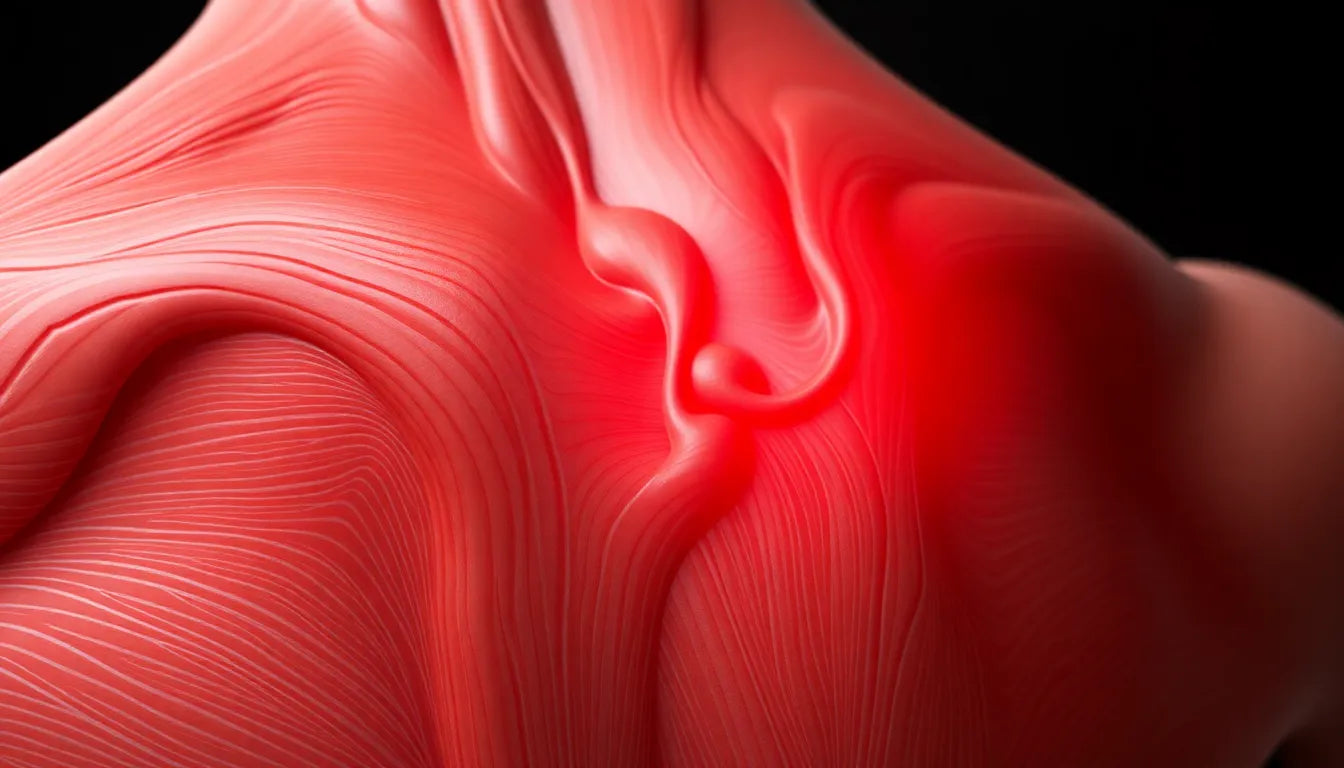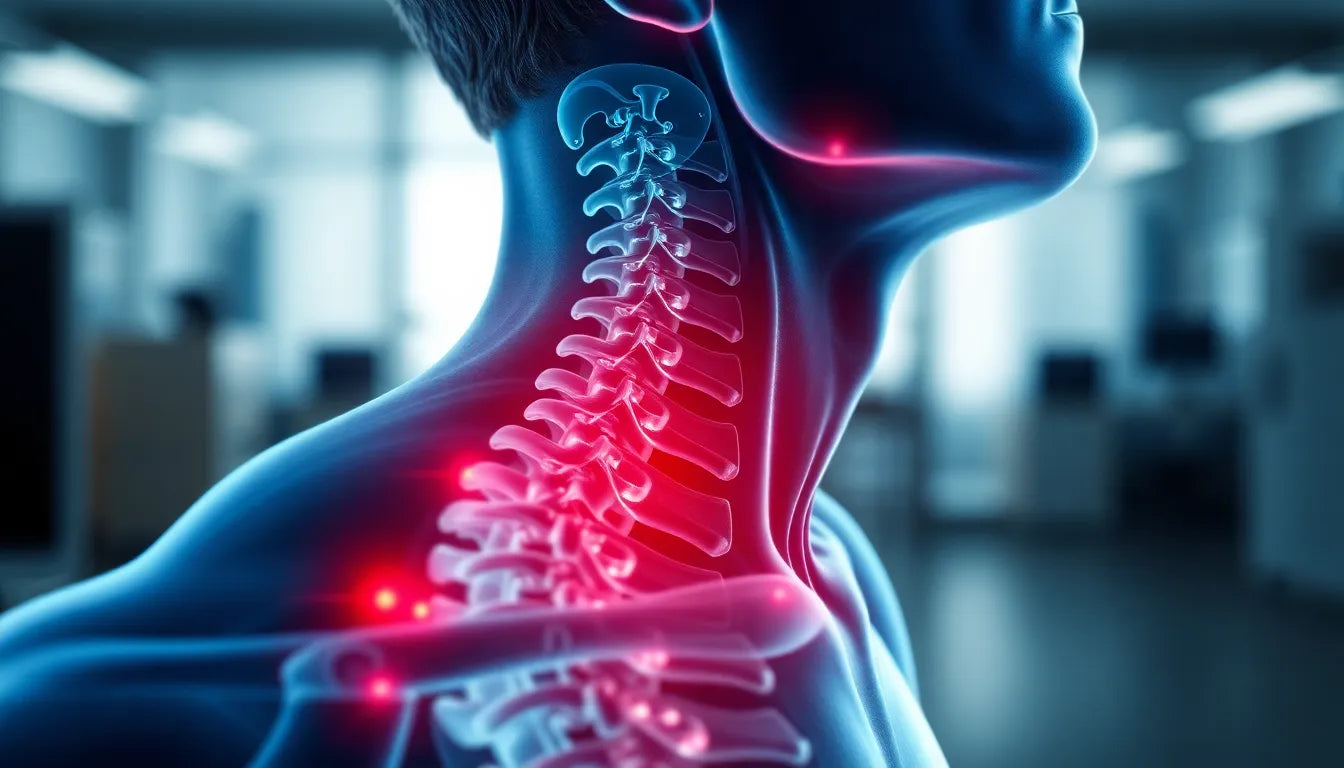Living with a herniated disc in the lower back can be a daunting challenge, disrupting daily routines and causing persistent discomfort. A herniated disc, often referred to as a slipped or ruptured disc, occurs when the soft inner gel of a spinal disc pushes through a crack in the tougher exterior casing. This condition commonly affects the lumbar region, leading to significant pain that can radiate down the legs, a condition known as sciatica. The pain and discomfort can be severe enough to impede simple activities like walking, sitting, or even standing for prolonged periods.
the importance of finding relief
For those suffering from a herniated disc, finding effective relief is not just about alleviating pain—it's about reclaiming quality of life. The continuous discomfort can lead to a decrease in mobility, affecting both physical health and mental well-being. It becomes essential to explore strategies that provide immediate relief while also managing the condition in the long term. This dual approach is crucial for maintaining an active lifestyle and preventing further complications. Understanding how to relieve herniated disc pain in the lower back can transform daily experiences, allowing individuals to engage more fully in their activities without constant hindrance.
engaging with the unexpected
Did you know that nearly 90% of people will experience back pain at some point in their lives, with herniated discs being a common culprit? Despite this prevalence, there are many misconceptions about the best ways to treat this condition. For instance, while some may believe that complete bed rest is the answer, modern medical advice often suggests a more active approach to recovery. Engaging with this surprising information can empower sufferers to seek out effective treatments that align with contemporary medical understanding. By dispelling myths and focusing on evidence-based practices, individuals can find a path to lasting relief and improved health.
conservative treatments for herniated disc pain
When managing herniated disc pain in the lower back, conservative treatments are often the first line of defense. These non-invasive methods focus on alleviating pain and improving mobility without the need for surgical intervention. Understanding and implementing these therapies can make a significant difference in daily comfort and long-term recovery.
heat and cold therapy
Heat and cold therapy are foundational elements in managing herniated disc pain. Heat therapy, using heating pads or hot compresses, helps to relax tight muscles and enhance blood flow to the affected area. This increased circulation can promote healing and provide soothing relief. On the other hand, cold therapy, typically applied with ice packs, is effective in reducing inflammation and numbing acute pain. For optimal results, it's recommended to alternate between heat and cold—using heat before engaging in activities to loosen muscles, and cold afterwards to minimize inflammation. This approach can provide balanced pain management throughout the day.
exercise and physical therapy
Exercise and physical therapy are critical components in the rehabilitation of a herniated disc. The McKenzie method, a specialized exercise program, is designed to shift pain from the legs back to the lower back, making it more manageable. Additionally, lumbar stabilization exercises can strengthen the muscles supporting the spine, reducing the burden on the discs. Engaging in low-impact activities, such as walking or swimming, helps maintain mobility without exacerbating pain. These exercises not only aid in immediate pain relief but also contribute to long-term spine health.
rest and activity modification
While rest is necessary for recovery, it should be approached with caution. Short-term bed rest, limited to one or two days, can provide relief from severe pain. However, extended inactivity may lead to muscle weakness and stiffness. Instead, it's beneficial to incorporate activity pacing—taking regular breaks and avoiding prolonged sitting or standing. Modifying activities, such as lifting with the legs rather than the back or using ergonomic tools, can prevent further strain on the lower back.
decompression techniques
Decompression techniques offer another avenue for relief by addressing the pressure on spinal nerves. Traction methods, often used in physical therapy, can gently pull the joints apart, allowing bulging material to retract. Simple decompression exercises, like hanging from a bar or using a desk for support, can be performed at home or work. These techniques help create space in the spine, alleviating nerve pressure and reducing pain.
medication for pain relief
Medications play a supportive role in managing herniated disc pain. Over-the-counter pain relievers, particularly non-steroidal anti-inflammatory drugs (NSAIDs) such as ibuprofen or naproxen, can reduce inflammation and provide significant relief. For targeted pain, topical pain relievers are an effective option, offering localized relief with minimal systemic effects. It's essential to use these medications as directed and consult with a healthcare provider to ensure they are appropriate for your specific condition.
advanced interventions for persistent pain
When conservative treatments are insufficient, advanced interventions may be necessary. Medical procedures such as epidural steroid injections can be effective in reducing inflammation around the affected nerves, providing substantial pain relief. Although minimally invasive surgery is considered a last resort, it can be an option for those with severe, unresponsive pain. Additionally, specialized techniques like hydrotherapy and myofascial release can offer complementary benefits. Hydrotherapy utilizes water's buoyancy to ease pain and inflammation, while myofascial release targets muscle tension through massage. These interventions can be tailored to individual needs, offering a comprehensive approach to managing herniated disc pain.
lifestyle modifications for managing herniated disc pain
Addressing herniated disc pain in the lower back extends beyond immediate relief methods and incorporates lifestyle modifications that can significantly enhance recovery and prevent future issues. By integrating ergonomic adjustments and comprehensive management strategies, individuals can create a supportive environment for healing and maintain long-term spinal health.
daily habit changes
Incorporating ergonomic adjustments into daily routines is crucial for those dealing with herniated disc pain. Ensuring proper sleeping positions, such as lying on the back with a pillow under the knees, can alleviate pressure on the spine. Similarly, setting up a workstation that promotes good posture is essential. This includes using an ergonomic chair that supports the lower back and adjusting the desk height to keep the computer screen at eye level. These small changes can reduce spinal stress and help maintain a healthy posture throughout the day.
comprehensive management strategies
Combining immediate relief techniques with long-term lifestyle changes creates a holistic approach to managing herniated disc pain. This strategy encourages individuals to explore various methods and find what works best for their specific condition. Regular practice of recommended exercises, consistent use of ergonomic aids, and maintaining an active lifestyle are all part of a comprehensive management plan. This balanced approach not only addresses current pain but also builds resilience against future flare-ups.
frequently asked questions
What is the most effective way to relieve herniated disc pain quickly?
For quick relief from herniated disc pain, alternating heat and cold therapy is highly effective. Heat therapy helps relax muscles and improve blood flow, while cold therapy reduces inflammation and numbs pain. Additionally, performing gentle exercises, such as stretching or walking, can provide immediate relief by enhancing mobility and reducing stiffness.
How long does it take to recover from a herniated disc?
The recovery time for a herniated disc varies based on the severity of the condition and the treatment approach. On average, most individuals experience significant improvement within a few weeks to a few months with consistent adherence to recommended treatments. However, some cases may require longer recovery periods, especially if advanced interventions are necessary.
Can I exercise with a herniated disc?
Yes, exercising with a herniated disc is not only possible but beneficial. Engaging in specific exercises, such as lumbar stabilization and low-impact activities, can strengthen the muscles supporting the spine and enhance flexibility. However, it's important to exercise caution and consult with a healthcare provider or physical therapist to ensure exercises are appropriate for your condition.
When should I consider surgery for a herniated disc?
Surgery is generally considered a last resort for herniated disc pain and is only recommended when conservative treatments fail to provide relief. Indicators for surgical intervention include severe pain that hinders daily activities, significant nerve compression, or the presence of neurological deficits such as weakness or loss of bowel control. Consulting with a healthcare professional can help determine if surgery is necessary.
Are there any ergonomic products that can help with herniated disc pain?
Yes, several ergonomic products can assist in managing herniated disc pain. Ergonomic chairs, lumbar support cushions, and adjustable standing desks are popular options that promote proper posture and reduce spinal stress. Additionally, ergonomic pillows designed to maintain spinal alignment during sleep can be beneficial. These aids, when used consistently, can contribute to a more comfortable and supportive environment for recovery.
Sources
- Spine-Health. "5 Little-Known Tips for Lumbar Herniated Disc Pain Relief."
- WebMD. "Herniated Disk Treatment, Remedies, and Medications."
- Dr. Rowe. "How to Relieve Herniated Disc Pain in SECONDS." YouTube.
- The Pain Center. "Tips For Lumbar Herniated Disc Pain Relief."
- Spine NJ. "Alleviate Herniated Disc Pain: 4 Best Tips."
- OrthoInfo (AAOS). "Herniated Disk in the Lower Back."
- Dr. Rowe. "How to Relieve a Lower Back Bulging Disc in 30 SECONDS." YouTube.



